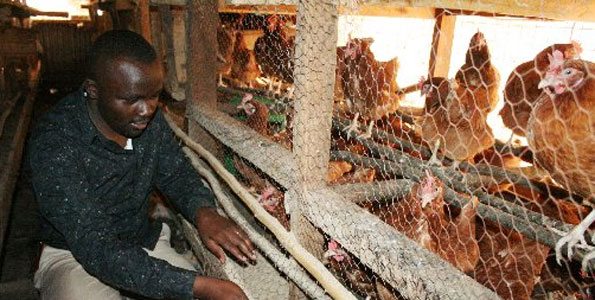Most of the raw materials for making poultry feeds like maize, sunflower cake, soybean, wheat bran and fishmeal come from neighbouring countries. For instance, a 50kg bag of layers mash retails at Sh2,300 here and Sh1,800 in Uganda. As a result, an egg from Uganda and Kenya retails at Sh7 and Sh10 to Sh12 respectively.
What should policy makers and farmers then do to lower the cost of feeds?
- First, the government should allow millers to import yellow maize duty free. Maize is the main ingredient for making animal feeds and is also a staple food in many parts of Kenya (in Uganda, matoke is the staple food). Because we are not able to meet domestic demand for white maize and have to import more, using it to make animal feeds directly competes with human food and this increases the cost and worsens food security.
- Second, lowering the cost of feeds is not enough if their quality is not regulated to ensure maximum animal production. Productivity in birds and animals is dependent on genetics, feed conversion efficiency, disease-control and feed quality. Poor quality feeds can lead to slow growth, low egg production, diseases or even death. Many manufacturers dupe farmers with products that do not contain the nutritional levels in the package.I also tested a sample of chick mash from a miller I considered reputable, but the results were equally disappointing (CP value of 15.06 per cent against a target of 18-20 per cent). A recent report quoting Livestock Principal Secretary, Prof Fred Segor, indicated that although Kenya boasts having four million exotic dairy cattle, it produces far less milk than South Africa, which has far fewer animals. The main reason for this was poor nutritional content of animal feeds.
- Recently, I subjected a sample of the maize germ from one supplier for quality testing at the Kenya Agricultural and Livestock Research Organisation’s laboratories. When the results came back, the Crude Protein (CP) was 0.32 per cent against a target of 10 and 14 per cent. This maize germ was not just adulterated, but fake. I later learnt that the miller was grinding maize cobs and selling it as maize germ.
- Third, farmers, particularly in Western, Nyanza and the Coastal regions should look to the future and start growing sunflower, soybean, millet, sorghum and cassava. Sunflower is used to extract edible oils, while the remnant cake is a key source of protein used in making animal feeds.
- Soybean is the world’s largest source of plant protein, and one of the most widely used protein source for feeds globally. It can also replace fishmeal, which is more expensive. Millet, sorghum and cassava can reduce pressure on white maize.
- Fourth, farmers should form groups to produce home-made animal feeds and stop relying solely on commercial millers. Making feeds at home saves between 30 and 50 per cent of costs on every 70kg bag. It is easier to purchase raw materials in bulk and transport costs are lower if farmers work together.
- Farmers’ groups can also take advantage of internet connectivity to network and share information about price and quality of raw materials in the market. It is time to disrupt the structure of the current poultry industry and make it work for producers. Waiting for the government to act is not an option.
- Fifth, the government should waive, with immediate effect, the 16 per cent value added tax on raw materials used to make animal feeds. This tax has had a negative effect on producers and consumers of eggs, meat and maize. Eggs are a nutritional powerhouse full of high quality proteins, vitamins and minerals. Under nutrition, although largely treatable and preventable, is responsible for more than a third of deaths in children under five both globally and in the country every year.
- Lastly, the government needs to allocate at least 10 per cent of the total budget to agriculture as stipulated in the Maputo declaration. Investment in this sector has the potential to alleviate poverty and improve nutrition and health of populations to meet the Sustainable Development Goals that were signed recently in New York.







